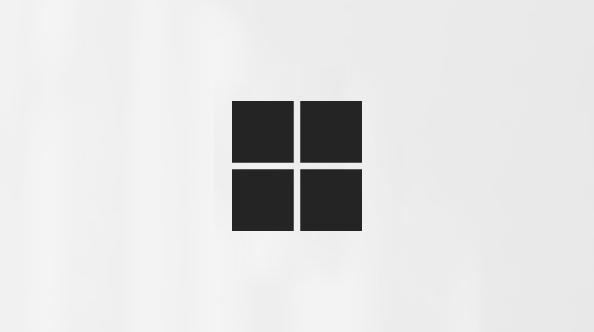Get to know the touch keyboard
Applies To
If a Windows device has a touchscreen, a touch keyboard can be used to enter text by tapping a keyboard that appears on the screen. Tapping on the touch keyboard can be done with either a pen or a fingertip. The touch keyboard can be used with the default layout or with one of several other available options.
Select the topic of interest for more information:
To open the touch keyboard:
-
Tap where you'd like to enter text, and the touch keyboard opens automatically.
-
Select the Touch keyboard icon in the system tray area of the taskbar.
Note: If the Touch keyboard icon isn't present in the system tray area of the taskbar, see the article Enable and disable the touch keyboard in Windows.
To set when the touch keyboard automatically opens, see the article Enable and disable the touch keyboard in Windows.
There are five different touch keyboard layouts that can be used when inputting text with the touch keyboard. There's also two Japanese specific touch keyboard layouts.
To view and switch between the touch keyboard layout options, select the keyboard settings icon in the upper-left corner of the touch keyboard.
|
Keyboard |
Description |
|---|---|
|
Default keyboard |
This layout is optimized for touchscreen typing. It has larger keys, and some keys are removed to make it easier to type. |
|
Split keyboard |
This layout splits the keyboard so that one half of it is near the left edge of the screen and the other half is on the right edge of the screen. This layout makes it easier to type when holding a touchscreen device with two hands. Note: Not available in all languages. |
|
Small keyboard |
This layout is a compact keyboard that can be moved anywhere on your screen. It's the same keyboard used when the touch keyboard is undocked. Note: Not available in all languages. |
|
Traditional keyboard |
This layout most replicates a standard external keyboard. It has all the functions and includes an expanded selection of keys. |
|
Handwriting panel |
This layout opens a handwriting panel a pen or fingertip can be used to input text. If you prefer to use your fingertip instead of a pen:
|
|
12-key layout (Japanese only) |
A keyboard layout for Japanese characters that places keys in a 3x4 grid. |
|
50-on layout (Japanese only) |
A keyboard layout for Japanese characters that places keys in a grid with 5 rows. Makes it easier for Japanese speakers to find a specific Hiragana character. |
Note: Swipe-based typing like shape writing isn't available in all languages.
To dock and undock the touch keyboard, select the icon next to the Close icon in the touch keyboard.
Docking and undocking the touch keyboard allows keeping the keyboard in a stationary position or move it to a different place on the screen to best fit your workstyle.
Tip: When using Default, Split, or Traditional keyboard layouts and the touch keyboard is undocked, it switches to the Small keyboard layout.
Support for Windows 10 has ended on October 14, 2025
After October 14, 2025, Microsoft will no longer provide free software updates from Windows Update, technical assistance, or security fixes for Windows 10. Your PC will still work, but we recommend moving to Windows 11.
-
Tap where you'd like to enter text, and the touch keyboard opens automatically.
-
Select the Touch keyboard icon in the system tray area of the taskbar.
Note: If the Touch keyboard icon isn't present in the system tray area of the taskbar, see the article Enable and disable the touch keyboard in Windows.
To set when the touch keyboard automatically opens, see the article Enable and disable the touch keyboard in Windows.
There are five different touch keyboard layouts that can be used when inputting text with the touch keyboard. To view and switch between touch keyboard layouts and options, select the Keyboard settings icon in the upper-left corner of the touch keyboard.
|
Keyboard |
Description |
|---|---|
|
Standard keyboard |
This layout is the default layout and is like a standard external keyboard, but a little more compact. With this layout, you don't have access to keys like numbers or ESC. |
|
Narrow layout (one-handed) keyboard |
With a smaller size than the standard keyboard, the narrow keyboard is meant to replicate your phone. It hides less of your screen while you're working and supports swipe-based typing like shape writing. |
|
Split keyboard |
This layout splits the keyboard so that one half of it is near the left edge of the screen and the other half is on the right edge of the screen. This layout makes it easier to type when holding a touchscreen device with two hands. Note: Not available in all languages. |
|
Handwriting panel |
This layout opens a handwriting panel a pen or fingertip can be used to input text. If you prefer to use your fingertip instead of a pen:
|
|
Expanded standard keyboard |
This layout most closely replicates a standard external keyboard. It has all the same functions and includes an expanded selection of keys. |
Note: Swipe-based typing like shape writing isn't available in all languages.
To dock and undock the touch keyboard, in the touch keyboard:
-
Select the Keyboard settings icon in the upper-left corner of the touch keyboard.
-
Select the icons just below the keyboard layout icon options.
Docking and undocking the touch keyboard allows keeping the keyboard in a stationary position or move it to a different place on the screen to best fit your workstyle.












